Turning on the Tap
Re-Opening your Building Safely: Plumbing Edition
Before employees & customers reoccupy a shuttered building, owners & managers must take steps to ensure health and safety are protected through proper water system recirculation processes.
THE DANGERS of STAGNANT WATER
While people have been staying in place at home, water has been staying in place in pipes. Neither is healthy long-term.

One of the issues resulting from a building shut down is water stagnation.
Water systems are designed to run frequently. Beyond damage to piping systems, fixtures and appliances, re-circulating stagnant water can introduce microbial growth and aerosolize opportunistic pathogens.
Specifically, the U.S. Centers for Disease Control and Prevention (CDC) says the lack of chlorinated water flowing through pipes, combined with irregular temperature changes, have created conditions that may be ripe for the bacteria that causes Legionnaires’ disease, a form of pneumonia. Prolonged building water stagnation also can lead to elevated lead and copper levels, and discolored water.


Specifically, the U.S. Centers for Disease Control and Prevention (CDC) says the lack of chlorinated water flowing through pipes, combined with irregular temperature changes, have created conditions that may be ripe for the bacteria that causes Legionnaires’ disease, a form of pneumonia. Prolonged building water stagnation also can lead to elevated lead and copper levels, and discolored water.
WHAT PROPERTIES SHOULD FOLLOW RECIRCULATION GUIDELINES?
Any property shut down or experiencing weeks (or months) of low occupancy could experience the negative impact of stagnant water. Fresh water should be drawn into building water systems and stagnant water flushed out before they are reopened. If the building’s water systems were being maintained during this time these steps can be considered additional precautionary measures.
We don‘t design buildings to be shut down for months.
-Andrew Whelton, associate professor of civil engineering and environmental ecological engineering at Purdue University
We don’t design buildings to be shut down for months.
-Andrew Whelton, associate professor of civil engineering and environmental ecological engineering at Purdue University

NOTE: It is recommended that professional plumbing contractors be contacted for assistance in re- any plumbing system.

THE GAME PLAN
Prepare to Flush the System

STEP 1 – FORM A TEAM
Include a plumbing professional & person knowledgeable of the systems’ correct intended operations.

STEP 2 – GET HANDS on the PLAN
Determine the location of all the components of the water system. Use the Building’s “as built” plans if available.

STEP 3 – CAP the TRAP
Don appropriate PPE and inspect & replace any evaporated trap seals.

STEP 4 – EXHAUST & VENTILATE
Turn on exhaust fans (found in kitchens & bathrooms). Open windows also help maximize ventilation.

STEP 5 – FLUSH WATER HEATER
Consult manufacturer’s protocols before beginning. Turn off & drain. Flush & refill.

STEP 6 – CLEAR AWAY COMPONENTS
Remove faucet aerators, shower heads, filters & other components that would slow flowing.

STEP 7 – TURN OFF MOTION ACTIVATION
Auto shut-off features will hinder steady flushing of lines.

FLUSH THE SYSTEM
To prepare your building for reopening, the first action is to flush the entire system including all water-using appliances. Flushing will clear out the potentially contaminated water that has accumulated in plumbing and replace it with fresh water. The fresh water will help mitigate the problems (loss of protective scale and biofilm growth) that occurred while the water was not being used. It is important to conduct the first water flush as close to the water source (meter) as possible. This will remove all sediment which may be found in the water service and not allow it to enter the building distribution system.
The below steps are guidelines. If you are unsure of your system, consult with a plumbing professional.
Start at the lowest level and work your way up.
The amount of flushing time for each component is determined based on the size of the system.
A professional plumbing contractor can assist with these calculations.
JANITOR OR FLOOR SINK
Start with a janitor sink or floor sink. These fixtures can move large volumes of hot and cold water quickly.
TOILETS (TANK TYPE)
Start on the lowest level in the bathroom closest to the water source. Start with the closest water closet.
Remove the tank cover. Close the seat lid. In absence of a seat lid, cover with a material which will prevent splashing or possible aerosolization from the bowl. Flush the water closet and hold open to flush the line.
TOILETS (FLUSH VALVE)
Turn the control stop off. Follow manufacturers instruction to disable the valve for a constant flush. This may be accomplished by removing the piston or the relief valve. Cover the top of the bowl to protect against splashing or possible aerosolization. Open the control stop slowly and flush the line. Turn control stop off, return the flush valve back into operation and turn the control stop on.
Once the first water closet has been flushed, move onto the next closest water closet, cover the bowl, and flush twice. Repeat until all the water closets have been flushed.
URINALS
Start with the closest urinal and flush a minimum 10 times. Continue flushing the remaining urinals 10 times each.
FAUCETS
Faucets. Starting with the faucet closest to the water source, open the cold and then hot water slowly to prevent splashing.
Once the closest sink is flushed, continue to the next closest. Repeat until all sinks have been flushed.
For both faucets & showers, flush cold water first then hot water. Flush until hot water reaches maximum temperature.
SHOWERS
Go to the shower compartment that is closest to the incoming source of water. Using a large plastic trash bag, cut a hole at the bottom, center of the bag just large enough to slip over the shower head. This will help to reduce the generation of aerosols during the flushing process. Open the shower valve to the fully open position.
WATER TREATMENT
Start with a janitor sink or floor sink. These fixtures can move large volumes of hot and cold water quickly.
If there are water treatment or filtration products used in the plumbing system, such systems may need to be regenerated and flushed. Consult and follow manufacturer flushing and disinfection procedures and recommendations.
DECORATIVE FEATURES
For fountains and other decorative water features, be sure to follow any recommended manufacturer guidelines for cleaning.
Ensure that decorative water features are free of visible slime or biofilm.
After the water feature has been re-filled, measure disinfectant levels to ensure that the water is safe for use.
BEVERAGE STATIONS
Drinking Fountain
Start with the closest drinking fountain. Turn on and flush the line. Continue the process.
Ice Machines
Remove all the ice. Flush the line. Dispose of the second batch of ice as well.
Direct Line Coffee Maker
Disconnect & flush the line. Refer to manufacturer’s disinfecting instructions.
Once the lowest level of the building has been completely flushed, move to the next floor and repeat until all floors have been completed. Then move to whole-building & exterior components.
COOLING TOWERS
Ensure that cooling towers are maintained (including start-up and shut-down procedures) per manufactures’ guidelines and industry best practices
Ensure that the tower and basin are free of visible slime or biofilm before use. If the tower appears well-maintained, perform an online disinfection procedure.
Further guidance on disinfection procedures can be found from the Cooling Technology Institute.
SAFETY SYSTEMS
Maintain all non-drinkable water systems and devices according to manufacturers’ specifications.
These may include:
- Sprinkler Systems
- Eye-Wash Stations
- Safety Showers
OTHER SYSTEMS
Consideration must be made for other water systems such as:
- reuse systems
- sanitary/sewer
- water drainage/collection
- pools/spas/hot tubs
- landscape irrigation
Follow the manufacturers specifications.

Wrapping Up
Steps to Take After Flushing the System

STEP 1 – REPLACE FILTERS
Replace all filters on point of service systems.

STEP 2 – CLEAN & RETURN COMPONENTS
Clean & disinfect all aerators, hoses and showerheads that were removed prior to flushing.

STEP 3 – SET WATER HEATER
Set minimum temperature to 120 degrees to prevent Legionella growth.

STEP 4 – COLLECT SAMPLES & TEST
Seven days prior to occupancy check water quality parameters of temperature, pH, and disinfectant levels.

STEP 5 – PLAN for the FUTURE
Consider developing a comprehensive water management program (WMP).
Plumbers Local 75 believes that access to clean and safe water is a fundamental human right. As such, plumbers protect the health of the nation. This guide has been prepared with the intent of helping any business or facility in southern Wisconsin that has been closed or underutilized during Governor Evers’ Safer-at-Home order begin to safely recirculate the water in their building.
It is recommended that professional plumbing contractors be contacted for assistance in re-opening any plumbing system.

Watch the Show
Building Wisconsin TV host Stuart Keith meets with the plumbing pros who keep the water in our homes, schools, and businesses healthy as we learn about safely reopening plumbing systems in closed or underused buildings.
Airing Weekends Starting 5/30![]()



Sources & Additional Resources
Currently, there are no national or industry guidelines for building reopening after extended shutdowns. This guide was created from information released by the following organizations. Visit these sites for extended, specific information.






